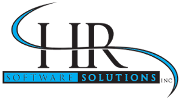Within Workday HR systems, worktags provide a versatile and powerful tool for labeling and organizing financial data. By utilizing worktags effectively, you can streamline your processes, gain valuable insights, and elevate your financial management game.
In this blog post, we’ll explore the realm of worktags and explore the best practices for using them in Workday. Whether you’re a seasoned user or just starting, these comprehensive tips and strategies will help you unlock the full potential of worktags. Let’s begin, shall we?
Define your worktags carefully
Worktags are the foundation of an organized financial system. So, take the time to define them with meticulous care.
Begin by considering the specific needs of your organization and create worktags that align with different departments, projects, cost centers, or relevant categories. A well-thought-out hierarchy of worktags and their relationships will bring clarity and structure to your financial data.
Additionally, establish clear naming conventions and guidelines to ensure consistency and ease of understanding across the organization. By defining your worktags thoughtfully, you set the stage for an efficient and robust financial management system.
Assign worktags to transactions and other financial data
With your worktags defined, it’s time to put them into action. Assign worktags to transactions and other financial data within Workday, providing them with meaningful context. The process can be accomplished manually or through automation, depending on your requirements. Consider creating rules that automatically assign worktags based on specific criteria, such as vendors or accounts, to streamline the tagging process.
Alternatively, you can opt for manual assignment during transaction entries or financial report reviews to exercise greater control and ensure accurate tagging. By diligently assigning worktags, you’ll establish a foundation for comprehensive data analysis and reporting.
Use worktags to filter and analyze your financial data
Now that your financial data is tagged with worktags, it’s time to unleash their analytical power. Worktags enable you to filter and analyze your data in a myriad of ways, allowing you to derive meaningful insights.
For example, you can generate reports that showcase all transactions associated with a particular project or department, providing a clear view of performance metrics. You can also leverage worktags to analyze trends over time, compare different areas of your business, and identify potential areas for improvement.
By consistently and effectively using worktags, you unlock a treasure trove of valuable information that can guide your financial decision-making.
Train your team on worktag usage
To ensure the smooth and efficient operation of worktags within your organization, it is crucial to provide comprehensive training to your team.
Familiarize everyone involved in entering financial data into Workday with the concept of worktags and their significance. Help them understand how worktags contribute to accurate data analysis and informed decision-making. Training sessions should cover topics such as assigning worktags, analyzing data using worktags, and generating reports that incorporate worktag data.
By ensuring that everyone is well-versed in worktag usage, you create a cohesive and empowered team that maximizes the benefits of workday financial management.
Using worktags in accounts payable
In the realm of accounts payable, worktags are a game-changer. They bring efficiency and organization to expense categorization and tracking. Let’s delve deeper into some exciting ways to utilize worktags in this context:
- Categorize invoices. Assign worktags to invoices as they are received, simplifying the categorization process. For example, you can assign a worktag representing the department responsible for paying the invoice. This categorization allows you to track expenses more efficiently and enhances the accuracy of your financial records.
- Analyze expenses. Worktags offer a fantastic opportunity to analyze expenses comprehensively. By assigning worktags to specific projects, you can track expenses related to those projects more accurately. This data-driven analysis enables you to identify areas where cost savings can be achieved, streamlining your budgeting and financial planning processes.
- Streamline approval processes. Worktags bring an added level of efficiency to the approval processes within accounts payable. By assigning a worktag representing the department responsible for invoice approval, Workday automatically routes the invoice to the designated approver. This streamlines the entire approval process, eliminating bottlenecks and ensuring timely payment processing.
Best practices for using worktags in accounts payable
To make the most of worktags in your accounts payable processes, let’s explore some best practices:
- Keep it simple. Avoid creating an overwhelming number of worktags. Focus on the categories that hold the most significance for your business, keeping the process simple and manageable. This ensures that worktags remain effective and easy to navigate for your team.
- Be consistent. Consistency is the key to avoiding confusion and maximizing the benefits of worktags. Use consistent naming conventions for worktags to ensure clarity and smooth communication across your organization. This consistency enables seamless collaboration and analysis.
- Use descriptive names. Choose descriptive names for your worktags to make their purpose easily understandable. Clear and intuitive naming enhances the efficiency of your financial management processes and makes it easier for your team to navigate and utilize the worktags effectively.
- Train employees. Invest time in training your employees on how to use worktags effectively within the context of accounts payable. Ensure that they understand the importance of worktags in categorizing and tracking expenses accurately. This training fosters consistency, accuracy, and collaboration among your team members.
- Regularly review and update. Worktags should evolve alongside your organization’s needs. Schedule regular reviews to ensure that worktags remain relevant, accurate, and aligned with your business objectives. By periodically evaluating and updating your worktags, you keep your financial data organized and reflective of the dynamic nature of your business.
Conclusion
Now, you’re well-equipped to embark on a thrilling journey through the world of worktags in Workday HR systems. By defining worktags carefully, assigning them consistently, and leveraging them for data analysis, you’ll optimize your financial management practices with HR Software Solutions.
Remember to invest in training your team, embrace best practices, and utilize worktags effectively within accounts payable. With a strategic approach to worktag usage, you’ll unlock the true potential of Workday HR systems and pave the way for streamlined processes, insightful data analysis, and informed decision-making.
HRSS can help you transition your company’s HR department into an efficient, reliable, functioning unit
Related Posts

Strategic Workforce Planning with Workday

Innovative Strategies in Workday Solutions
About Us

With HR Software Solutions as your partner throughout the involved HR system implementation process, all of your needs will be met.